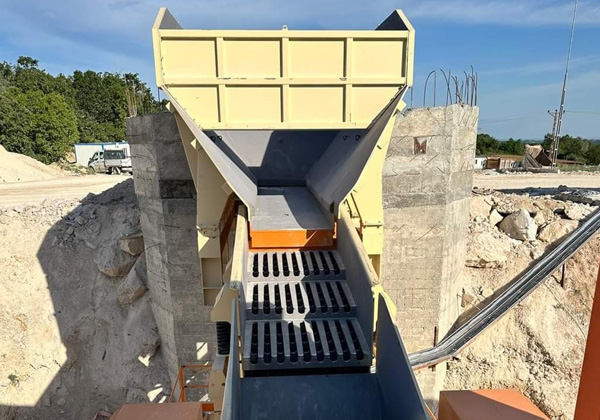Feeding rock into a crusher is a crucial process in the aggregate, mining, and construction industries, where proper feeding ensures optimal crushing performance and longevity of the machinery. A well-executed feeding process can significantly influence the efficiency, output quality, and operational safety of the crushing plant. Here, we will discuss the essential steps and considerations to effectively feed rock into a crusher.
1. Preparing the Material:
Before feeding rock into the crusher, it’s essential to prepare the material properly. The preparation involves sorting and sizing the rocks to ensure they fit within the crusher’s feed opening. Oversized rocks should be broken down using a hydraulic hammer or other methods to avoid jamming the crusher. Additionally, removing any debris, such as dirt, clay, or organic material, is necessary to prevent contamination and unnecessary wear on the crusher’s components.

2. Selecting the Right Feeding Equipment:
Choosing the appropriate feeding equipment is crucial for consistent and controlled feeding. Equipment such as vibrating feeders, apron feeders, or belt feeders can be used to regulate the flow of material into the crusher. These feeders help maintain a steady supply of rocks, preventing overloading or underloading, which could affect the crusher’s performance. The choice of feeder depends on the crusher type, material characteristics, and the desired production rate.
3. Establishing the Feeding Technique:
The technique of feeding rocks into the crusher can significantly impact the efficiency and wear of the machine. Generally, rocks should be fed centrally into the crushing chamber to ensure even wear and prevent imbalances in the crusher. The height from which rocks are dropped into the crusher should be minimized to reduce the impact forces that can cause damage. Additionally, using a controlled, continuous feed rather than intermittent bursts helps maintain steady crushing pressure and improves overall productivity.
4. Monitoring and Adjusting Feed Rate:
Once the feeding process is initiated, continuous monitoring is essential to ensure that the feed rate remains optimal. If the feed rate is too high, it can lead to overloading, causing the crusher to choke or experience excessive wear. Conversely, a feed rate that is too low can result in inefficient crushing and reduced output. Operators should regularly check the crusher’s performance metrics and make necessary adjustments to the feed rate, ensuring the machine operates within its designed capacity.
5. Ensuring Safety During Feeding Operations:
Safety is paramount when feeding rocks into a crusher. Operators should never attempt to clear blockages or jams manually while the crusher is operating. Instead, the machine should be shut down and isolated before any maintenance or clearing work is undertaken. Proper training and use of personal protective equipment (PPE) are essential to minimize risks during feeding operations. Additionally, the installation of safety devices such as emergency stop buttons and guarding around the feed area can help prevent accidents and injuries.
In conclusion, feeding rock into a crusher requires careful preparation, the right equipment, appropriate feeding techniques, ongoing monitoring, and strict adherence to safety protocols. By following these guidelines, operators can maximize crusher performance, prolong equipment life, and ensure a safe working environment.

